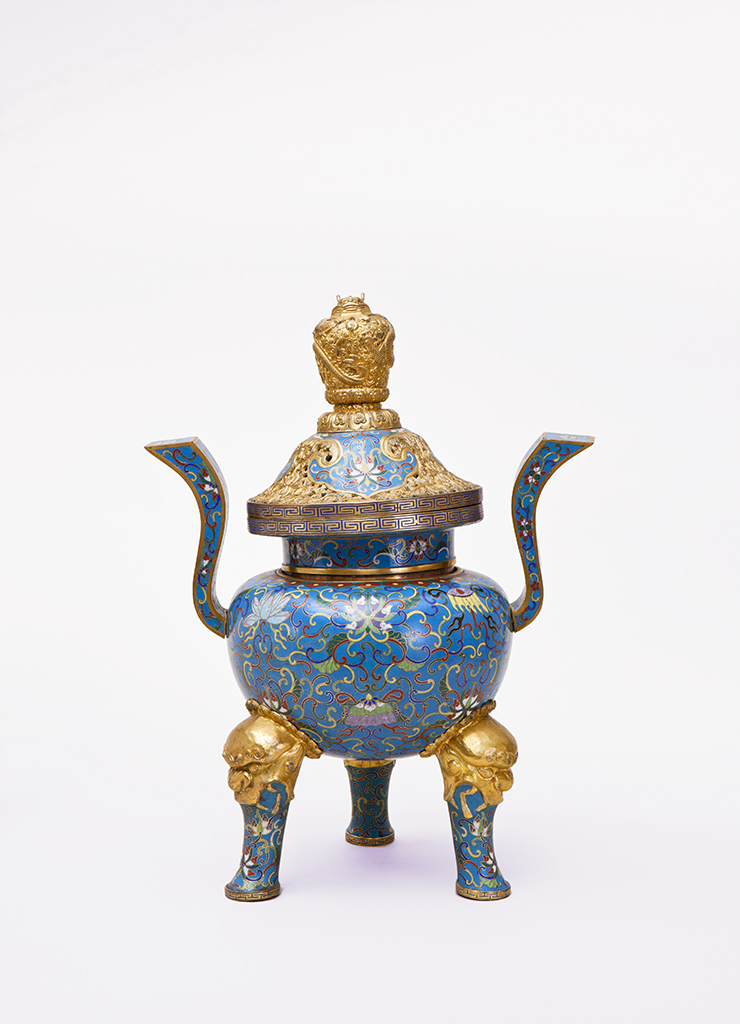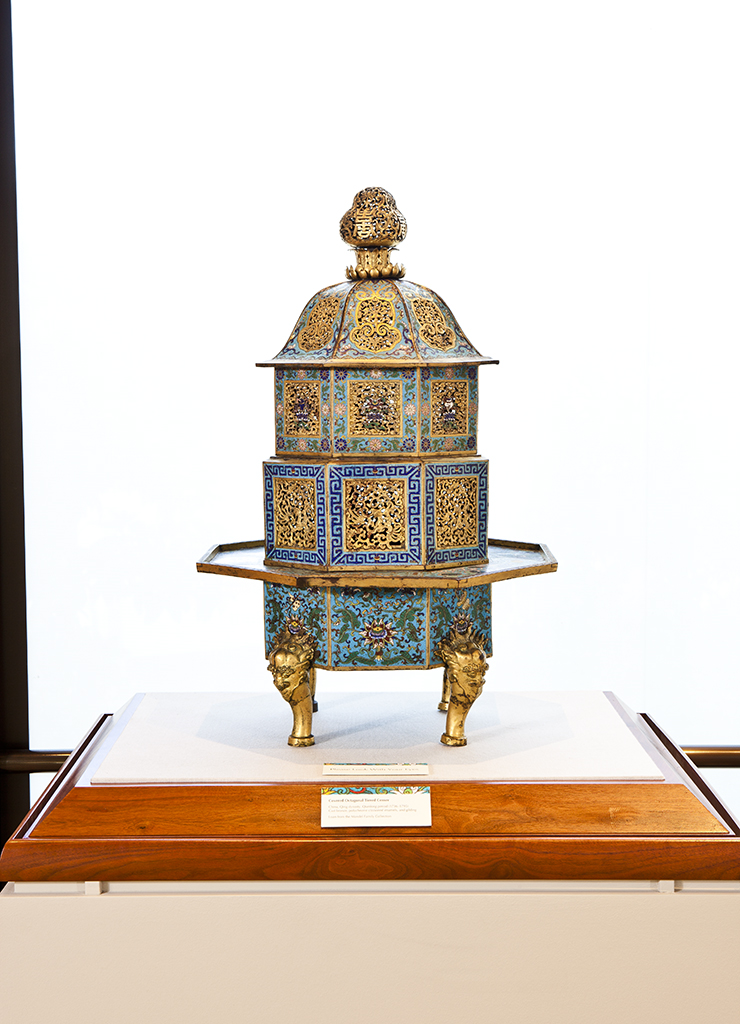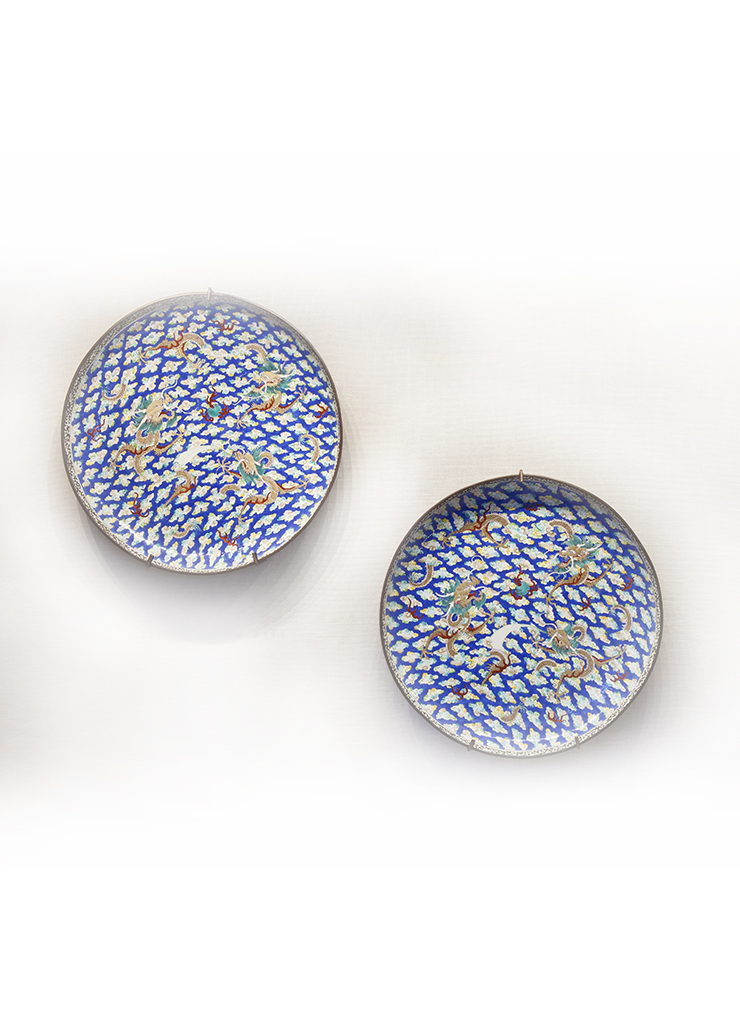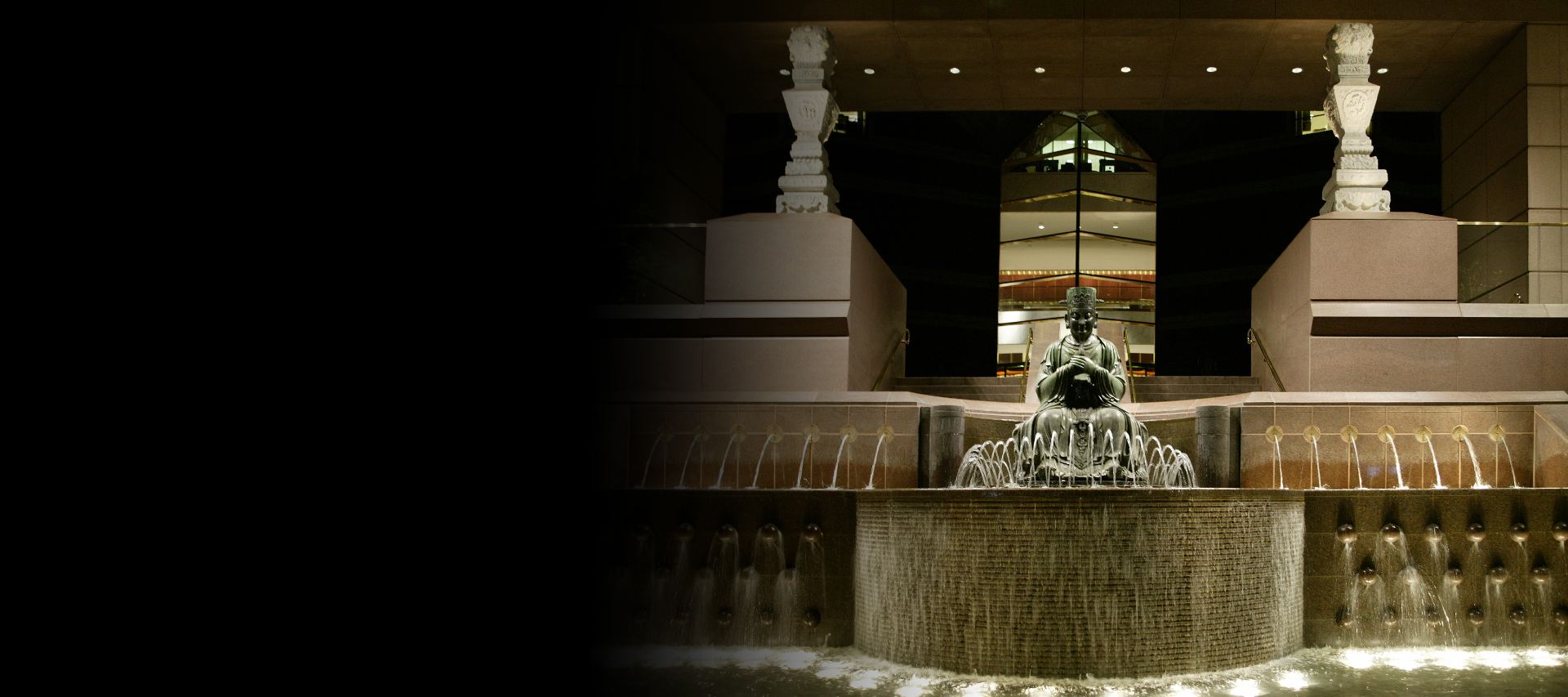
Culture/Country: China
Period: Qing dynasty, Qianlong period (1736-1795)
Medium: Cast bronze, polychrome cloisonné enamels, and gilding,
Collection Title: Mandel Family Collection

Period: Qing dynasty, Qianlong period (1736-1795)
Medium: Cast bronze, polychrome cloisonné enamels, and gilding
Collection Title: Mandel Family Collection

Period: Qing dynasty, Qianlong period (1736-1795)
Medium: Cast bronze, polychrome cloisonné enamels, and gilding
Collection Title: Mandel Family Collection

Culture/Country: China
Period: Qing dynasty, Qianlong period (1736-1795)
Medium: Cast bronze, polychrome cloisonné enamels, and gilding
Collection Title: Mandel Family Collection

Culture/Country: China Period: Qing dynasty, Qianlong period (1736-1795)
Medium: Cast bronze, polychrome cloisonné enamels, and gilding
Collection Title: Trammel S. Crow Collection

A dozen monumental cloisonné vessels that fit the imperial model made during the Ming (1368-1644) and Qing (1644-1911) dynasties are on view in the exhibition Five Colors: Chinese Cloisonné Vessels on Loan from a the Mandel Collection.
Cloisonné is a process of inserting colored enamel pastes into a network of cells, or “cloisons” that rise above a metal ground. The cells are formed by bending wire, usually copper, and soldering it to a metal surface, usually bronze or copper. Enamel paste is made by tinting glass with metal oxides and grinding it to a paste. The decorated object is then fired at a low temperature in a “muffle” kiln, and the enamel fuses to the body without loss of placement or color. Gold liberally applied to designs creates even more brilliance. Take a Connoisseur’s Checklist provided in the galleries along with you as you view the exhibition and judge the quality of these works for yourself.
In cases adjacent to the large cloisonné vessels on long-term loan to the Crow Collection, an instructive array of objects from the Collection is assembled to demonstrate various uses of enamel in the Chinese decorative arts. Here you will find enamel as coloration for a porcelain monochrome; in pictures and patterns painted on ceramics–under and over the glaze; as inlay into metal, and in designs painted on metal in imitation of more costly cloisonné and enamel techniques.


